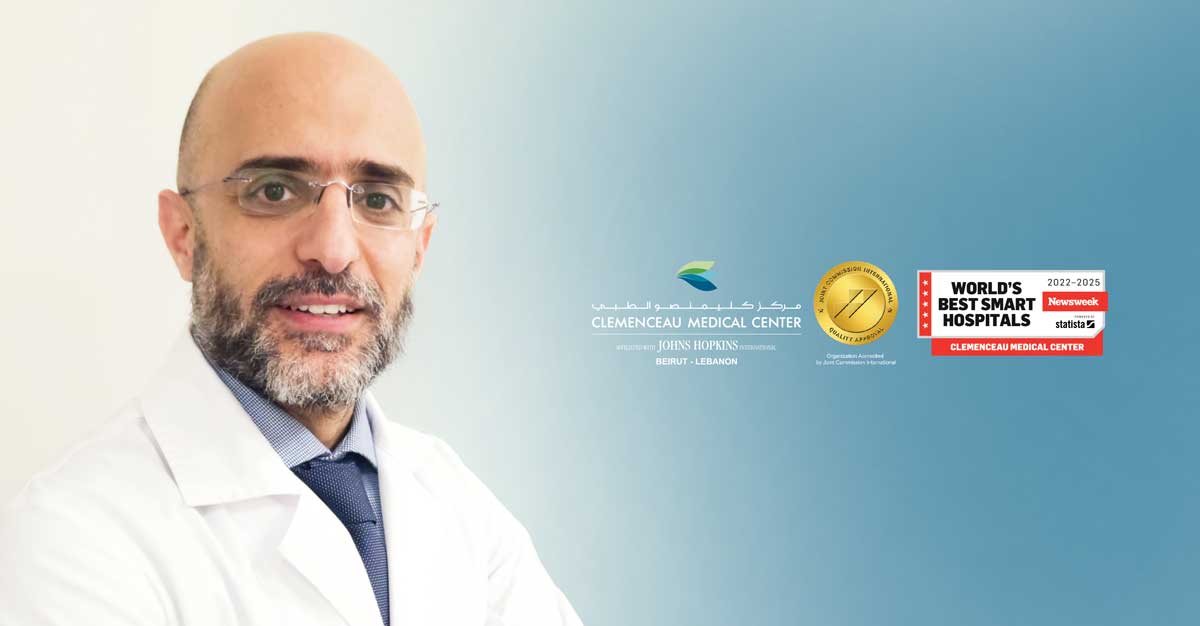Transforming Cancer Treatment: The Technological Leap in Radiation Oncology at Clemenceau Medical Center

The Radiation Oncology Department at Clemenceau Medical Center is equipped with cutting-edge radiation therapy technologies. Key among these is the state-of-the-art TrueBeam STx linear accelerator, featuring a high-definition multileaf collimator for precise dose modulation. The department has fostered a more integrated, patient-centered approach by expanding multidisciplinary tumor board meetings. These combined efforts have led to enhanced clinical outcomes and a better overall patient experience. “Hospitals” magazine interviewed Dr. Clement Khoury, Head of Radiation Oncology at Clemenceau Medical Center Beirut, who talked about the department and the latest advances in radiation oncology.
What are the most prominent developments the Radiation Oncology Department at Clemenceau Medical Center has witnessed recently?
Over the past few years, our department has seen transformative advancements in technology and patient care. We have adopted sophisticated techniques such as Stereotactic Radiosurgery (SRS), Volumetric Modulated Arc Therapy (VMAT), Stereotactic Body Radiation Therapy (SBRT), and Image-Guided Radiation Therapy (IGRT), which have significantly enhanced the accuracy and efficacy of cancer treatment. Furthermore, we have expanded our multidisciplinary tumor board meetings and implemented a more integrated, patient-centered care model. These changes have collectively elevated our clinical outcomes and patient experience.
What are the most important and latest devices and equipment currently available in the Radiation Oncology Department? What are their capabilities and features?
Our facility is equipped with some of the most advanced radiation therapy technologies available today. This includes a state-of-the-art linear accelerator TrueBeam STx equipped with a high-definition multileaf collimator for precise dose modulation. We utilize an advanced planning system the Eclipse version 18.0.1, which support complex treatment modalities including Intensity-Modulated Radiation Therapy (IMRT) and VMAT. Daily cone-beam CT imaging is also employed for image-guided treatments to ensure precise targeting and facilitate adaptive treatment planning. Most recently, we have integrated the Varian Perfect Pitch 6 degrees-of-freedom treatment couch, allowing for highly accurate patient positioning, and the Brainlab ExacTrac Dynamic system, which provides real-time tracking and submillimetric precision for intracranial and extracranial treatments by merging surface and x-ray tracking. Another feature of ExacTrac Dynamic is allowing skin marker free prepositioning for our daily treatments providing a more easy and pleasant experience for our patients. These innovations collectively enhance our ability to deliver safe, precise, and effective radiation therapy.
Can you provide specific examples of the types of cases or tumors that are successfully treated using the technologies available in CMC?
We treat a wide array of cancer types with a high degree of success. Notable examples include the treatment of brain tumors both benign and malignant such as meningiomas and brain metastases using Stereotactic Radiosurgery (SRS). We treat early-stage lung, liver tumors and oligometastatic disease using SBRT. Head and neck malignancies, prostate and gastrointestinal primaries with VMAT. Deep Inspiration Breath Hold (DIBH) for advanced lung disease and left-sided breast tumors. The advanced technology we use allows us to deliver effective doses while minimizing damage to surrounding healthy tissue, making it especially beneficial for tumors near critical structures.
How is coordination and collaboration carried out between the Radiation Oncology Department and other departments at Clemenceau Medical Center, such as Oncology and Surgery, to ensure the best patient care?
We maintain a highly collaborative, multidisciplinary approach to cancer care. Weekly tumor board meetings bring together specialists from medical oncology, surgical oncology, radiology, and pathology to design comprehensive, individualized treatment plans. Additionally, our electronic health record system enables seamless information sharing and coordination, ensuring continuity of care and optimal treatment outcomes for our patients.
What are the procedures and protocols followed to ensure the highest levels of quality and patient safety during treatment?
CMC is in affiliation with Johns Hopkins International and has achieved accreditation from Joint Commission International (JCI), USA. With this, CMC joins an exclusive group of hospitals worldwide, which have passed JCI’s stringent clinical quality standards. Patient safety and quality assurance are foundational to our practice. We implement rigorous protocols including daily machine calibration, patient-specific quality assurance testing, and adherence to international standards such as those from AAPM and ASTRO. Every treatment plan undergoes peer review, and a safety checklist is completed before each session to confirm patient identity, treatment site, and delivery accuracy.
How do you see the role of Artificial Intelligence (AI) in improving radiation oncology processes in the near and distant future?
Artificial Intelligence is already beginning to reshape our field. AI-driven tools now assist in contouring, treatment planning, and workflow optimization. In the near term, I foresee AI enhancing our ability to tailor treatments based on predictive modeling and patient-specific data. Looking further ahead, AI will likely play a key role in real-time adaptive therapy and biologically guided radiation, ultimately driving more precise and personalized cancer care.
What is your vision for the future of radiation oncology?
My vision is for radiation oncology to evolve into a highly adaptive, biologically personalized discipline. As imaging, AI, and systemic therapies continue to advance, we will be able to tailor treatment more precisely to each patient’s tumor biology and real-time response. At CMC Beirut, we are fully committed to this future and are continually investing in the latest technologies and training to lead innovation in the region.














